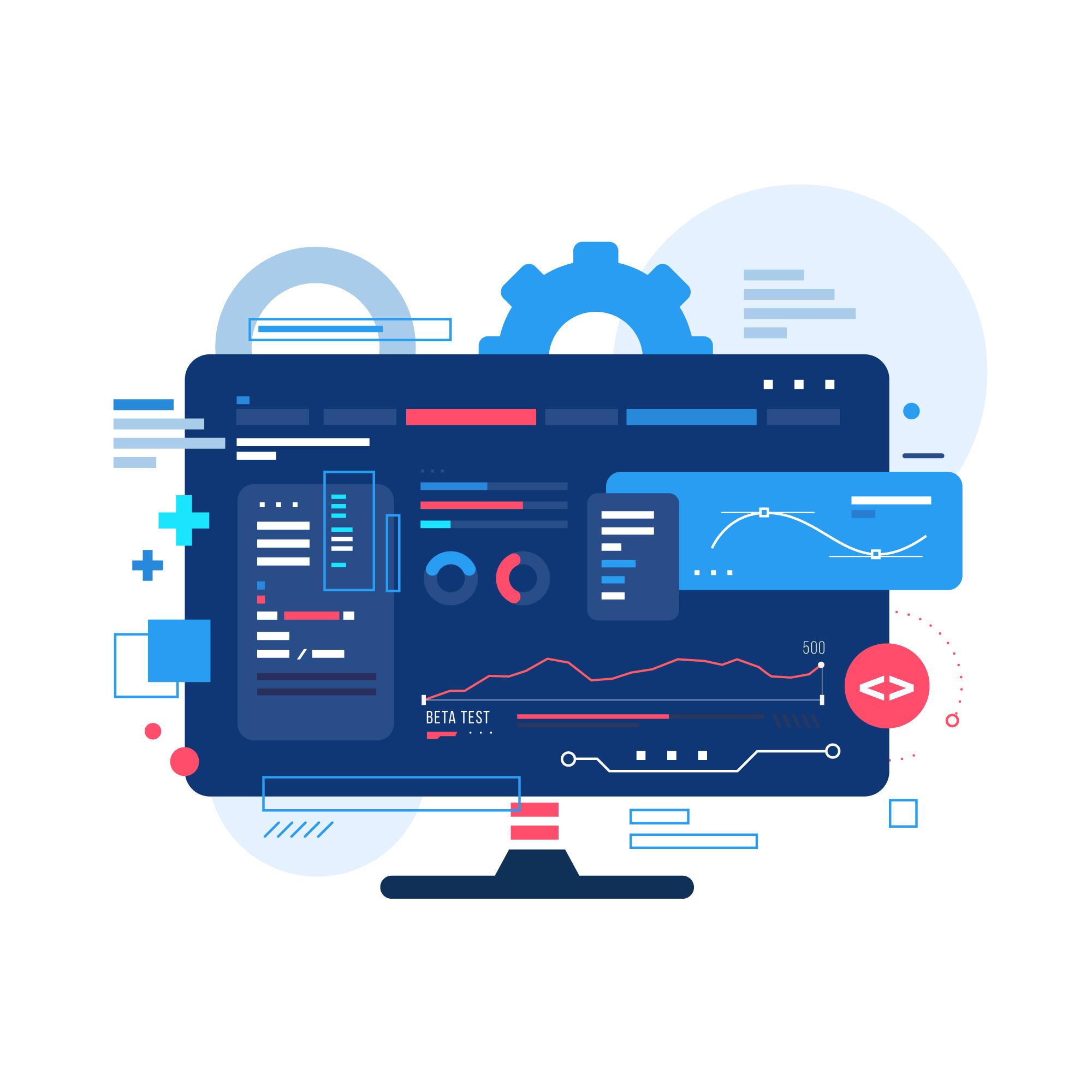Top Web Development Agency
Ignite your online identity with cornerstone digital assets.
Build your presence with superb designs and functionality.
Jump Start Your Business
WordPress Development Services
Whether you need an e-commerce site, a simple blog, , or a complex enterprise solution, Canadian Agency’s team has the skills and experience in WordPress development to deliver a solution that exceeds your expectations.
WordPress theme
Customization
Get a tailored theme designed to meet your business needs and stand out from the crowd.
Customized Plugin
Development
Our expert team provides reliable, tailor-made plugins for a seamless and efficient online presence.
Secure WordPress
Development
We provide custom solutions that prioritize security and protect your online presence.
WordPress Website
Maintenance
Protect your online presence with our expert WordPress maintenance services.
Our WordPress
Development Process
Our WordPress development process takes you from concept to launch, delivering a flawless experience for you and
your customers.
1. Concept
This involves understanding the client’s needs, defining project goals and requirements and creating a project plan.
2. Design
Develop wireframes, mockups, and prototypes to create a visual representation of the WordPress Website UI/UX.
3. Development
Code the website and integrate necessary third-party tools or APIs for enhanced functionality and performance.
4. Testing
Conduct various tests to ensure the security and functionality of the WordPress Website.
5. Deployment
Launch the website and monitor its performance, making necessary updates to ensure optimal functionality.
6. Maintenance
Ensure optimal performance and security through maintenance, upgrades, and new feature additions.
Years Experience
Talented Squad
Apps Developed
Project Delivered
Countries Served
Client Satisfaction
Why Choose Canadian agency for WordPress Development
Harness digitized business solutions comprising web, Android, and iOS app solutions, leveraging Blockchain, AI Chatbots, Machine Learning and IoT technologies for your startup or enterprise.
Hire WordPress Developers with
Canadian agency
Our WordPress development team is well-versed in the latest technologies and tools, ensuring that your website is built using the most advanced and efficient methods available.
Fast Hiring
With our fast and efficient hiring process, you can add a new team member with just a click of a button and have them onboarded within 24-48 hours.
Top Talent
Our team is dedicated to sourcing and managing the top talent available, while also providing ongoing training and development to ensure they remain the best in their field.
Time Zone Aligned
We’ve equipped our team with collaborative skills that transcend time zones, using advanced scheduling tools to ensure that all meetings and deadlines align with the client’s time zones.
Fast Hiring
With our fast and efficient hiring process, you can add a new team member with just a click of a button and have them onboarded within 24-48 hours.
Top Talent
Our team is dedicated to sourcing and managing the top talent available, while also providing ongoing training and development to ensure they remain the best in their field.
Time Zone Aligned
We’ve equipped our team with collaborative skills that transcend time zones, using advanced scheduling tools to ensure that all meetings and deadlines align with the client’s time zones.
WordPress Development Solutions for Industries
We understand that every industry has unique demands. That’s why we provide custom WordPress website development services that cater to your industry’s specific requirements. Whether you need a marketing site, e-commerce store, web app, or community portal, we’ve built it before.

Lorem Ipsum is simply dummy text of the printing and typesetting industry. Lorem Ipsum has been the industry’s standard dummy text ever since the 1500s, when an unknown printer took a galley of type and scrambled it to make a type specimen book. It has survived not only five centuries, but also the leap into electronic typesetting, remaining essentially unchanged. It was popularised in the 1960s with the release of Letraset sheets containing Lorem Ipsum passages, and more recently with desktop publishing software like Aldus PageMaker including versions of Lorem Ipsum.

Lorem Ipsum is simply dummy text of the printing and typesetting industry. Lorem Ipsum has been the industry’s standard dummy text ever since the 1500s, when an unknown printer took a galley of type and scrambled it to make a type specimen book. It has survived not only five centuries, but also the leap into electronic typesetting, remaining essentially unchanged. It was popularised in the 1960s with the release of Letraset sheets containing Lorem Ipsum passages, and more recently with desktop publishing software like Aldus PageMaker including versions of Lorem Ipsum.

Lorem Ipsum is simply dummy text of the printing and typesetting industry. Lorem Ipsum has been the industry’s standard dummy text ever since the 1500s, when an unknown printer took a galley of type and scrambled it to make a type specimen book. It has survived not only five centuries, but also the leap into electronic typesetting, remaining essentially unchanged. It was popularised in the 1960s with the release of Letraset sheets containing Lorem Ipsum passages, and more recently with desktop publishing software like Aldus PageMaker including versions of Lorem Ipsum.

Lorem Ipsum is simply dummy text of the printing and typesetting industry. Lorem Ipsum has been the industry’s standard dummy text ever since the 1500s, when an unknown printer took a galley of type and scrambled it to make a type specimen book. It has survived not only five centuries, but also the leap into electronic typesetting, remaining essentially unchanged. It was popularised in the 1960s with the release of Letraset sheets containing Lorem Ipsum passages, and more recently with desktop publishing software like Aldus PageMaker including versions of Lorem Ipsum.

Lorem Ipsum is simply dummy text of the printing and typesetting industry. Lorem Ipsum has been the industry’s standard dummy text ever since the 1500s, when an unknown printer took a galley of type and scrambled it to make a type specimen book. It has survived not only five centuries, but also the leap into electronic typesetting, remaining essentially unchanged. It was popularised in the 1960s with the release of Letraset sheets containing Lorem Ipsum passages, and more recently with desktop publishing software like Aldus PageMaker including versions of Lorem Ipsum.

WordPress Development Solutions for Industries
We understand that every industry has unique demands. That’s why we provide custom WordPress website development services that cater to your industry’s specific requirements. Whether you need a marketing site, e-commerce store, web app, or community portal, we’ve built it before.
Lorem Ipsum is simply dummy text of the printing and typesetting industry. Lorem Ipsum has been the industry’s standard dummy text ever since the 1500s, when an unknown printer took a galley of type and scrambled it to make a type specimen book. It has survived not only five centuries, but also the leap into electronic typesetting, remaining essentially unchanged. It was popularised in the 1960s with the release of Letraset sheets containing Lorem Ipsum passages, and more recently with desktop publishing software like Aldus PageMaker including versions of Lorem Ipsum.
Lorem Ipsum is simply dummy text of the printing and typesetting industry. Lorem Ipsum has been the industry’s standard dummy text ever since the 1500s, when an unknown printer took a galley of type and scrambled it to make a type specimen book. It has survived not only five centuries, but also the leap into electronic typesetting, remaining essentially unchanged. It was popularised in the 1960s with the release of Letraset sheets containing Lorem Ipsum passages, and more recently with desktop publishing software like Aldus PageMaker including versions of Lorem Ipsum.
Lorem Ipsum is simply dummy text of the printing and typesetting industry. Lorem Ipsum has been the industry’s standard dummy text ever since the 1500s, when an unknown printer took a galley of type and scrambled it to make a type specimen book. It has survived not only five centuries, but also the leap into electronic typesetting, remaining essentially unchanged. It was popularised in the 1960s with the release of Letraset sheets containing Lorem Ipsum passages, and more recently with desktop publishing software like Aldus PageMaker including versions of Lorem Ipsum.
Lorem Ipsum is simply dummy text of the printing and typesetting industry. Lorem Ipsum has been the industry’s standard dummy text ever since the 1500s, when an unknown printer took a galley of type and scrambled it to make a type specimen book. It has survived not only five centuries, but also the leap into electronic typesetting, remaining essentially unchanged. It was popularised in the 1960s with the release of Letraset sheets containing Lorem Ipsum passages, and more recently with desktop publishing software like Aldus PageMaker including versions of Lorem Ipsum.
Lorem Ipsum is simply dummy text of the printing and typesetting industry. Lorem Ipsum has been the industry’s standard dummy text ever since the 1500s, when an unknown printer took a galley of type and scrambled it to make a type specimen book. It has survived not only five centuries, but also the leap into electronic typesetting, remaining essentially unchanged. It was popularised in the 1960s with the release of Letraset sheets containing Lorem Ipsum passages, and more recently with desktop publishing software like Aldus PageMaker including versions of Lorem Ipsum.
BundlBox
Looking to purchase necessary household items for the next Christmas season but don’t have enough budget? This is where BundlBox comes in handy. With this one-of-its-kind digital platform, Canadian customers can pre-order household items of their choice at a discounted price. With various deals and gift cards, you can purchase products at a significantly lower price. Furthermore, if you are low on budget and can’t afford to pay the full amount, BundlBox offers weekly, bi-weekly, and monthly payment packages. Choose the package of your choice and pre-order any product for the next year’s Christmas or summer season!

EcoTech Windows and Doors
Installing high-quality doors and windows is every homeowner’s wish. EcoTech Windows and Doors is transforming how Ontario’s homeowners access high-quality, energy-efficient window and door solutions. Known for its eco-conscious products and customer-centric service, this platform simplifies the journey to a more sustainable home from selection to installation. This comprehensive platform simplifies home improvement projects, connecting customers with the best energy-efficient products and installation services in Canada.

Parking GreenP
Parking GreenP is an initiative spearheading a public service mission to overhaul parking convenience in Toronto through intelligent technology. As a pioneering smart parking solution for the city, it empowers residents with real-time visibility into parking availability across neighborhoods. Going beyond spotting vacant regular parking spots, Parking GreenP also assists electric vehicle owners by pointing them to the nearest EV charging stations through its interactive maps and location services. This revolutionary platform attempts to address the daily parking hassles Toronto drivers grapple with.

FAQ's
Yes We Have a Large Pool of Developers, So you can Hire Developers and Start Working with Developers within 24hrs of Posting your Project Requirements.
Our Tools & Technologies
HTML
CSS 3
JavaScript
WebRTC
PHP
Symfony
WordPress
Laravel
Bootstrap

Shopify

Adobe After Effects

Adobe Illustrator

Adobe Photoshop

Adobe XD

Figma
Appium
Jira
JMeter
Postman
Selenium
Trello
Flutter
Android
iOS
Java
Kotlin
Swift
React Native
XCode
MongoDB
Innotta
MySql
PostgreSQL
SQLite
Bitcoin

Blockchain
Ethereum
MetaMask
Ripple
Solidity


VP of Marketing, OSI Affiliate

“Canadian Software Agency was an excellent partner in bringing our vision to life! They managed to strike the right balance between aesthetics and functionality, ensuring that the end product was not only visually appealing but also practical and usable.”


Related Post

DevOps in the Age of Quantum Computing
As the digital landscape accelerates toward unprecedented computational capabilities, quantum computing emerges as a transformative force that can redefine every facet of technology, including software engineering. While DevOps has revolutionized traditional software development by fostering collaboration, continuous integration, and agile deployment, quantum computing challenges these paradigms. The convergence of DevOps and quantum computing is no longer a distant speculation—it’s a reality that organizations must prepare for. Understanding how DevOps practices must evolve to embrace the quantum revolution is crucial for staying relevant and secure in a rapidly changing technological world.
This blog delves into the multi-dimensional impact of quantum computing on DevOps pipelines, explores its challenges, and highlights the innovations needed to adapt.
Understanding Quantum Computing’s Impact on DevOps
Quantum computing operates on qubits rather than classical bits, allowing operations on exponentially larger data spaces through phenomena like superposition and entanglement. A qubit can be in a state like α|0⟩ + β|1⟩, where α and β are complex numbers that determine the probability of measuring 0 or 1. This shift from deterministic computation to probabilistic paradigms changes the rules for developing, testing, and deploying applications.
For DevOps teams, this means re-evaluating current development and deployment strategies. Existing CI/CD tools, versioning systems, and test environments are built around classical architectures. Quantum programs often require different logic constructs and computational resources, but do not seamlessly integrate into these pipelines. As quantum computers grow more accessible through cloud platforms like IBM Quantum and Amazon Braket, the DevOps community must prepare to manage hybrid environments that combine classical and quantum processing.
How Quantum Computing Changes Software Development
Quantum software development introduces entirely new languages (e.g., Q#, Qiskit, Cirq) and hardware requirements, requiring a parallel development track alongside traditional applications. Unlike classical applications, quantum programs often involve circuit-based representations, optimization problems, and probabilistic outcomes, requiring developers to shift from linear coding to matrix manipulation and gate-level abstractions.
In traditional DevOps, software engineers and operations teams work closely to automate builds and deployments. In a quantum context, building involves compiling quantum circuits and verifying that they are executable on quantum hardware or simulators. The testing process is also fundamentally different, since quantum operations may not return the same result every time, unit tests must account for probabilistic correctness and statistical consistency.
Furthermore, developer collaboration must now include quantum physicists and mathematicians, making cross-functional communication even more critical. Agile methodologies must be modified to accommodate quantum development’s steep learning curve and complex debugging processes.
Security in a Post-Quantum World
One of the most widely discussed impacts of quantum computing is on cybersecurity. Quantum algorithms such as Shor’s algorithm directly threaten RSA and ECC encryption, which underpin much of today’s secure communication and authentication methods. This poses a twofold challenge for DevOps teams: securing CI/CD pipelines against quantum threats and preparing applications to operate securely in a post-quantum environment.
Security-as-Code and DevSecOps practices must include quantum-resilient cryptographic algorithms, such as those being standardized by NIST. This includes lattice-based cryptography, hash-based signatures, and multivariate polynomial equations. Organizations must audit dependencies, APIs, and data storage systems to ensure compatibility with post-quantum standards.
Additionally, secure key exchange during software deployment will require attention. Secrets management, token generation, and access control systems integrated into DevOps workflows must be updated to leverage post-quantum cryptographic primitives to ensure end-to-end pipeline integrity.
Infrastructure and Orchestration Challenges
Quantum systems require specialized hardware such as dilution refrigerators, lasers, and error-correcting circuits, making them vastly different from cloud-based classical servers. While cloud-accessible quantum hardware is becoming available, orchestrating resources across classical and quantum environments is non-trivial.
In DevOps, containerization and orchestration tools like Docker and Kubernetes enable consistent deployment and scaling. However, quantum applications often cannot be containerized in the same way. The orchestration challenge lies in managing hybrid workflows that offload quantum tasks while retaining classical logic in cloud-native environments.
Infrastructure as Code (IaC) frameworks must evolve to provision quantum workloads, possibly by integrating with quantum-specific cloud SDKs. Terraform modules and Helm charts may need support for quantum backends, simulators, and latency-aware networking. Monitoring and auto-scaling strategies must also account for quantum compute resource availability and execution timing windows.
Adapting DevOps Practices for a Quantum Future
The transition to quantum-enhanced DevOps won’t be instantaneous; instead, it will evolve through hybrid models. As such, DevOps teams must start adapting their practices now to prepare for a quantum-integrated future.
Key adaptation areas include:
Skill Development: Teams must invest in quantum programming education, enabling classical developers to understand qubit manipulation, quantum gates, and quantum error correction.
Hybrid CI/CD Pipelines: Integrate classical and quantum tools within a unified pipeline, such as a pipeline that includes both Python-based pre-processing and Qiskit-based quantum logic.
Tooling Extensions: Modify build tools and test frameworks to support quantum-specific languages and execution models.
Version Control: Develop version control strategies that accommodate quantum circuits and classical code, ensuring traceability and rollback capabilities for quantum algorithms.
Early adopters can gain a competitive advantage by building scalable frameworks that support quantum-readiness from day one.
Rethinking CI/CD for Quantum Applications
CI/CD pipelines, a cornerstone of DevOps, must be reimagined to accommodate quantum application delivery. Quantum development typically involves circuit creation, simulation, compilation for target hardware, and real-time calibration. Due to hardware constraints, these steps are computationally expensive and time-sensitive.
A quantum-ready CI/CD pipeline may include:
Quantum Circuit Linting: Ensuring gate optimization and constraint satisfaction.
Simulation Phase: Running circuits on simulators for accuracy before live deployment.
Quantum Compilation: Targeting specific quantum processing units (QPUs) with platform-aware compilers.
Hardware Queueing: Submitting jobs to real quantum hardware, sometimes waiting for execution windows.
Probabilistic Test Validation: Verifying results against expected statistical distributions.
Tools like Qiskit Runtime, Amazon Braket SDK, and Azure Quantum APIs must be integrated as first-class citizens into these pipelines. Developers must also account for circuit depth, qubit decoherence, and execution fidelity in their DevOps strategies.
Observability and Monitoring in Quantum Systems
Observability in quantum systems presents a unique challenge. Classical observability tools like Prometheus, Grafana, or ELK Stack are not built to interpret quantum state transitions or gate fidelities.
Monitoring quantum systems requires metrics such as:
- Qubit Coherence Time
- Gate Error Rates
- Quantum Volume
- Job Queue Lengths on QPUs
Integrating these into DevOps monitoring dashboards allows teams to detect hardware inefficiencies or problematic circuits. Log management systems must also be adapted to include quantum-specific telemetry data, possibly through quantum-aware observability agents.
Anomaly detection models must also be re-trained to interpret quantum telemetry, which may appear random but still requires hardware fault tolerance and system health oversight.
Quantum-Secure DevOps
Quantum-secure DevOps refers to securing applications and the DevOps process from potential quantum threats. This includes safeguarding build pipelines, repositories, cloud configurations, and secrets management.
Steps toward quantum-secure DevOps include:
End-to-End Encryption Using Post-Quantum Algorithms: Employ quantum-safe cryptography for pipeline credentials, SSH access, and secure file storage.
Immutable Logs: Leverage blockchain or Merkle tree-based logging systems to ensure tamper-proof observability records.
Zero Trust Architecture: Employ advanced identity verification methods across tools, ensuring no implicit trust within DevOps environments.
Quantum-Resistant Authentication: Replace classical key pairs with post-quantum key exchange protocols in CI/CD access control layers.
By implementing these measures, organizations can begin to secure their software supply chains against quantum-powered cyber threats.
Adopters of Quantum-Ready DevOps
Several organizations and research institutions have started integrating DevOps practices into their quantum development lifecycles. Companies like IBM, Google, Microsoft, and Rigetti offer cloud-based access to quantum systems, complete with APIs and SDKs that can be integrated into modern DevOps toolchains.
Startups such as Zapata Computing and QC Ware also build platforms supporting quantum-classical hybrid application development. Meanwhile, government agencies and national labs are exploring quantum DevSecOps as part of cybersecurity modernization strategies.
Open-source communities also play a key role—projects like Qiskit, Cirq, and PennyLane encourage collaborative development with version-controlled repositories and automated testing pipelines.
Conclusion
DevOps in the age of quantum computing is not about replacing the old with the new, but about expanding horizons and embracing complexity. Quantum computing introduces a new computational paradigm that challenges traditional software development and operations models. From rethinking CI/CD pipelines to securing infrastructure against quantum threats, the path to a quantum-ready DevOps ecosystem requires proactive transformation.
Organizations that begin laying the foundation today—investing in quantum education, toolchain modernization, and hybrid workflows—will be best positioned to thrive in the era of quantum advantage. The quantum future is not a question of “if” but “when”—and DevOps must evolve now to meet that future confidently.

How Data-Driven Design Decisions Elevate User Experience
User experience (UX) is a critical differentiator for businesses. A well-designed interface can drive engagement, conversions, and customer loyalty, while a poor one can lead to frustration and high bounce rates. But how do designers ensure their decisions lead to optimal UX? The answer lies in data-driven design.
Data-driven design leverages quantitative and qualitative insights to inform UI/UX decisions, moving beyond assumptions and guesswork. By analyzing user behavior, preferences, and pain points, designers can create aesthetically pleasing, highly functional, and intuitive interfaces.
The Science of Data-Driven UI/UX
Data-driven UI/UX design uses real-world information — user behavior patterns, interaction metrics, feedback loops, and performance analytics — to guide design choices rather than relying purely on assumptions or aesthetics.
Empowered by data, teams no longer ask, ‘What looks good?’ but rather, ‘What works best for the user?’ This shift from subjective to objective design boosts confidence, ensuring that every user interface element is validated against measurable user behavior.
Tools That Unlock User Insights
Modern designers and UX researchers have access to sophisticated tools that unlock deep, actionable insights into how users interact with digital platforms. Each tool offers a unique perspective, shedding light on different facets of the user journey.
Heatmaps
Heatmaps visualize user interactions on a page, highlighting where users click, hover, and scroll the most. These colorful overlays provide immediate feedback on which parts of a design attract attention and which areas are ignored.
Key advantages
Identify hotspots of user activity.
Detect design elements causing friction or confusion.
Optimize content placement for maximum visibility.
Some Popular heatmap tools are Hotjar, Crazy Egg, and Mouseflow.
For example, a heatmap might reveal that users are clicking an image that isn’t linked, indicating an opportunity to adjust the design for better engagement.
Session Recordings
Session recordings capture real-time videos of individual users navigating a site or app. Unlike aggregate data, session recordings offer a granular, step-by-step view of user behavior.
Key Advantage
Discover pain points in user flows.
Observe unexpected behavior that analytics tools miss.
Validate hypotheses about usability issues.
Session recordings are invaluable during usability testing. They offer raw insights that often lead to significant improvements in experience design.
A/B Testing
A/B testing (also known as split testing) is a controlled experiment in which two or more versions of a design element are compared to determine which performs better.
Applications
Testing different call-to-action (CTA) button colors, placements, or wording.
Comparing two layouts for better conversion rates.
Experimenting with different form field arrangements.
Tools like Optimizely, Google Optimize, and VWO allow teams to set up robust experiments and monitor key performance indicators (KPIs) to validate design decisions statistically.
Eye-Tracking Studies
Eye-tracking technology measures where and how long users focus their visual attention when interacting with a UI.
Use cases
Evaluating the visual hierarchy of a webpage.
Testing advertisement placements.
Improving readability and scanability of content.
By understanding natural gaze patterns, designers can structure layouts that better align with intuitive navigation paths, ensuring critical information is seen at the right moment.
How Data Informs Key UI/UX Decisions
Data can transform design teams’ decisions across critical UI/UX design aspects when properly leveraged.
Navigation & Information Architecture
Navigation must be intuitive, and the information architecture must align with user expectations. Analytics data, site search queries, and session recordings inform how users attempt to find information.
Examples of data-informed decisions
Reordering menu items based on usage frequency.
Consolidating content categories based on search term clusters.
Simplifying deep navigational structures to reduce user effort.
Designers might inadvertently prioritize less important sections without data, frustrating users.
Button Placement & CTAs
Calls-to-action are critical for conversions, whether the goal is downloading a whitepaper, signing up for a trial, or completing a purchase. Heatmaps, A/B tests, and click tracking help designers determine the most effective placement, design, and wording for CTAs
Some of the Important considerations to consider are
Above-the-fold vs. below-the-fold positioning.
Size, color contrast, and surrounding whitespace.
Action-oriented language driven by user psychology.
Even small changes, like altering a button’s color based on data from multivariate tests, can significantly boost conversion rates..
Form Optimization
Forms often represent the final step in a user’s journey — signing up, subscribing, or completing a purchase. Yet even the most interested users can abandon a task if a form feels cumbersome or confusing. Data-driven form optimization addresses these challenges by identifying where friction occurs and implementing targeted improvements.
The Key data-driven strategies for optimizing forms include
Field Reduction: Analytics often reveal that excessive fields increase abandonment. Reducing non-essential fields can streamline the process and boost completion rates.
Logical Field Arrangement: Heatmaps and session recordings can show how users move through forms. Structuring fields to match natural user expectations minimizes cognitive load.
Real-Time Validation: Instant feedback on form errors prevents user frustration and keeps them engaged through the final submission.
By continuously monitoring form analytics and making iterative changes based on real-world behavior, designers can transform frustrating bottlenecks into seamless, satisfying user experiences. This reassures designers of their competence in creating user-friendly forms.
When Data Contradicts Design Trends
In the transitional world of UI/UX, design trends come and go, but user needs remain constant. Sometimes, data-driven insights directly contradict trendy design choices, revealing gaps between what looks fashionable and what works for users.
The Common examples include
Low-contrast elements: Stylish ghost buttons and muted palettes might look sleek, but conversions suffer if users can’t distinguish key actions.
Complex visuals: Trends like neumorphism can hinder accessibility, making interfaces harder for users with visual impairments to navigate.
Design teams must prioritize data-backed usability over fleeting aesthetic trends when confronted with such conflicts. Successful products are built not by chasing visual trends but by delivering intuitive, accessible, and user-centered interfaces.
Ultimately, the best designs marry timeless usability principles with selective trend adoption, creating modern and practical experiences.
Balancing Data with Creativity
Despite the power of data, successful UI/UX design isn’t a mechanical, numbers-only endeavor. The most exceptional experiences blend data-informed decisions with human creativity, inspiring designers to create innovative and engaging interfaces.
Balancing acts include
Using data to validate big-picture ideas, not micromanage artistry.
Letting creative risk-taking coexist with iterative testing.
Applying intuition and empathy alongside hard metrics.
Designers must remember that users are human, and not every emotional or aesthetic reaction can be captured by analytics. Striking the right balance ensures that products are both functional and delightful.
Creativity drives differentiation, while data ensures usability and success. Ignoring either side diminishes the power of design.
Conclusion
Relying solely on intuition is no longer sufficient. Data-driven design empowers UX teams to create products that are not only aesthetically pleasing but also highly functional, efficient, and satisfying to users.
Designers can leverage tools like heatmaps, session recordings, A/B testing, and eye-tracking to uncover powerful insights about real-world behavior. These insights guide better decisions in navigation, CTA placement, form optimization, and beyond. However, even the best data must be tempered with human creativity and empathy to build products that truly resonate.
Ultimately, data-driven UI/UX design elevates user experience by ensuring every decision is backed by evidence, focused on user needs, and enhanced by imaginative creativity. In doing so, brands can build better interfaces and better relationships with their users.

The Art of Manual Testing in an Automated World
In the software development landscape, automation has become the cornerstone of efficiency. Continuous Integration/Continuous Deployment (CI/CD) pipelines, AI-driven test generation, and scripted regression suites dominate the conversation. Yet, amidst this automation revolution, manual testing is an indispensable art, providing a unique value that machines cannot replicate, and reassuring us of its continued relevance.
Software is built for humans, who think, behave, and interact in ways that machines cannot fully replicate. Manual testing brings intuition, creativity, and real-world user empathy into the quality assurance process. This blog explores why manual testing still matters, how it complements automation, and the evolving skill set of modern manual testers.
The Strengths of Manual Testing
While automation excels at repetitive, data-heavy validations, manual testing shines in areas requiring human judgment, adaptability, and real-time problem-solving. This adaptability empowers manual testers to handle various testing scenarios, making them essential and indispensable for software development.
Exploratory Testing
Exploratory testing is one of the most potent techniques in manual testing. It involves simultaneous learning, test design, and execution. The tester navigates the application without predefined scripts, relying instead on experience and intuition. This approach uncovers unexpected defects and ensures comprehensive application behavior analysis.
Exploratory testing is beneficial during early-stage development or when there is limited documentation. It also provides flexibility to test new features rapidly without the time-consuming setup of automation scripts. The outcome is not just defect identification, but also valuable insights into the software’s overall quality and readiness.
UX Evaluation
User experience (UX) is inherently subjective and requires human perception to evaluate effectively. Manual testers play an integral role in assessing how intuitive and user-friendly an application feels. Through manual testing, they can simulate real-world scenarios, observe user interactions, and identify friction points that automation simply cannot capture, thereby adding significant value to the product development process.
For instance, a tester can assess if a multi-step form feels too long or if a mobile app’s swipe gestures respond as expected. These qualitative insights are key to refining the product and ensuring it meets user expectations. Manual UX testing often involves feedback loops, user personas, and journey mapping to cover user behaviors.
Rapid Feedback Loops in Agile
Agile methodologies demand rapid, iterative development cycles. While automation plays a significant role in regression and continuous integration, manual testing brings immediate feedback that supports quick decision-making. Manual testers can perform ad hoc checks, validate new features, and verify bug fixes within minutes of deployment, making it a crucial part of Agile development.
This immediacy is crucial in sprint reviews, daily stand-ups, and backlog grooming sessions. Manual testing also acts as a bridge between developers, designers, and stakeholders by validating that user stories and acceptance criteria are correctly implemented.
The Manual Tester’s Modern Toolkit
Contrary to misconceptions, modern manual testing isn’t limited to spreadsheets and checklists. Today’s manual testers leverage various tools to enhance efficiency, traceability, and collaboration. TestRail, Zephyr, and Xray support detailed test case management and result tracking. Bug tracking platforms like Jira and Bugzilla streamline issue reporting and follow-up.
Moreover, screen recording tools like Loom or OBS help testers capture bugs more effectively, while browser extensions can simulate device resolutions and network speeds. These technologies allow manual testers to document their findings and share them accurately with distributed teams.
Mind Mapping for Test Coverage
Mind mapping is a creative yet structured technique that helps testers visualize their test cases. Instead of linear lists, mind maps present a branching diagram that reflects different test paths, scenarios, and conditions.
By using tools like XMind or MindMeister, manual testers can create dynamic and adaptable test strategies that encourage a more profound understanding of the application. This visual format is easy to communicate with stakeholders and encourages brainstorming and identification of edge cases.
Session-Based Test Management
Session-Based Test Management brings discipline and structure to exploratory testing. It involves defining time-boxed sessions with specific testing charters, objectives, and metrics. Each session is documented for reproducibility and evaluated for effectiveness.
This approach enhances accountability and allows teams to track test coverage without relying on traditional test scripts. SBTM encourages focused testing, continuous improvement, and knowledge sharing within teams. It also aligns well with Agile practices where time and transparency are paramount.
The Renaissance of Bug Hunting
Manual testing is undergoing a renaissance through the art of bug hunting. Modern testers approach bug identification as a creative challenge, using curiosity and analytical skills to uncover defects hidden in plain sight.
This process often involves cross-browser testing, responsive design checks, localization validation, and interaction testing across devices. The “bug hunter” mindset values critical thinking, hypothesis testing, and investigative skills. The result is defect discovery, improved code quality, and user satisfaction.
Upskilling the Manual Testing Profession
Manual testers are evolving their skillsets to stay relevant in an increasingly automated world. Knowledge of basic scripting, CI/CD pipelines, and test automation frameworks enhances a manual tester’s value.
Certifications such as ISTQB, CP-MAT, and BBST demonstrate a commitment to the craft. At the same time, online platforms like Test Automation University and Udemy offer resources to learn new tools and techniques. Collaboration with developers and product teams helps testers understand code behavior and system architecture.
Developing “Software Detective” Skills
At its core, manual testing is about thinking like a user and investigating like a detective. Testers who develop observational acuity, logical reasoning, and empathy are better equipped to spot flaws that others miss.
These skills are cultivated through experience, critical analysis of previous test cases, and studying common software failure patterns. Being a software detective also means asking the right questions, documenting clues (logs, screenshots, videos), and constructing reproducible bug reports that developers can act on.
The Manual-Automation Hybrid Role
Today’s testing landscape is not a dichotomy but a spectrum. Many manual testers are transitioning into hybrid roles that combine exploratory prowess with automation skills. These roles require a nuanced understanding of when to automate and when manual testing is more appropriate. Testers fluent in both domains can write automation scripts for repetitive tasks while dedicating their manual expertise to complex workflows, usability checks, and ad hoc scenarios. This synergy results in higher test coverage, faster releases, and better quality assurance.
Testers fluent in both domains can write automation scripts for repetitive tasks while dedicating their manual expertise to complex workflows, usability checks, and ad hoc scenarios. This synergy results in higher test coverage, faster releases, and better quality assurance.
Measuring What Matters
Like any testing practice, manual testing must be measured to demonstrate its effectiveness. Metrics such as defect density, test coverage, test and validation time, and user-reported issues post-release can reflect the value of manual efforts. For instance, a decrease in defect density over time can indicate the improvement of the quality of the software due to effective manual testing. These metrics validate the impact of manual testing and contribute to the overall software quality.
Qualitative feedback from stakeholders, UX reviews, and sprint retrospectives can also validate the impact of manual testing. It’s essential to align testing goals with business objectives and user needs, rather than merely counting test cases executed.
Conclusion
Manual testing continues to play an irreplaceable role in ensuring software quality. It offers depth, empathy, and adaptability that machines cannot replicate. From exploratory testing to UX validation, agile feedback loops to bug-hunting artistry, manual testers bring a human touch that bridges the gap between functionality and user satisfaction.
As the industry evolves, so must the manual testing profession—embracing tools, upskilling, and blending with automation where needed. In this way, manual testing retains its relevance not as a relic of the past but as an art form that continues to shape the future of software quality assurance.

Real-Time Notifications in Laravel with Echo & WebSockets
Real-time notifications have become a crucial feature in modern web applications, enhancing user experience by delivering instant updates without requiring page refreshes. Traditional HTTP requests are inefficient for real-time communication since they rely on constant client-side polling. Instead, WebSockets provide a persistent, full-duplex communication channel between the server and client, enabling seamless data exchange.
Laravel simplifies real-time functionality with Laravel Echo, a JavaScript library that seamlessly integrates with the framework’s built-in broadcasting system. This straightforward integration means developers can effortlessly implement live notifications, chat systems, activity feeds, and more, boosting their confidence.
This guide will walk you through setting up real-time notifications in Laravel using Echo and WebSockets. We’ll cover backend configuration, frontend integration, security considerations, performance optimization, and debugging techniques.
Understanding Laravel Echo
Laravel Echo is a powerful JavaScript library designed to work with Laravel’s event broadcasting system. It acts as a bridge between the server and the client, providing an intuitive API for subscribing to channels and listening to server-sent events in real time. It’s a key component in the real-time notification setup, handling the client-side of the WebSocket communication.
Echo supports multiple broadcasting drivers, including Pusher, a cloud-based WebSocket service, and Laravel Websockets, a self-hosted alternative. It also works with Redis and Socket.IO for custom setups.
One of Echo’s key strengths is its ability to handle different types of channels:
Public Channels – Accessible to all users without authentication.
Private Channels – Restricted to authenticated users.
Presence Channels – Track user presence, which is useful for features like online user lists in chat applications.
Echo automatically manages connection stability, reconnecting if the WebSocket drops, ensuring a smooth user experience.
WebSockets Explained
WebSockets provide a persistent, two-way communication channel between a client (browser) and a server. Unlike traditional HTTP requests, which require the client to poll the server for updates repeatedly, WebSockets allow the server to push data to the client instantly, creating an exciting real-time experience for users.
How WebSockets Work in Laravel
Laravel’s broadcasting system dispatches events to a WebSocket server, relaying them to connected clients. The process involves:
Event Triggering – A Laravel event is broadcast.
WebSocket Relay – The event is sent to a WebSocket server (e.g., Pusher or Laravel Websockets).
Client-Side Handling – Laravel Echo listens for the event and updates the UI in real time.
This architecture ensures low-latency communication, making it ideal for dynamic applications.
Setting Up the Backend
To enable real-time notifications in Laravel, the backend must be configured appropriately to handle WebSocket connections. This involves setting up Laravel’s broadcasting system, defining events that trigger notifications, and ensuring the server can communicate with WebSocket services like Pusher or a self-hosted Laravel Websockets server. The process begins with installing necessary dependencies, configuring environment variables, and registering the broadcast service provider. Once the backend is prepared, Laravel can dispatch events that clients will receive in real time.
Configuring Laravel for Broadcasting
Before Laravel can broadcast events, it needs the appropriate broadcasting driver. The most common choice is Pusher, a cloud-based WebSocket service, but developers can also use Laravel Websockets for a self-hosted solution. Configuration starts by updating the .env file with the correct broadcast driver and necessary API keys. Additionally, the application configuration must enable Laravel’s broadcasting service provider. This ensures that events are correctly routed to the WebSocket server. Once configured, Laravel can seamlessly send real-time updates to connected clients.
Creating a Notification Event
A notification event in Laravel is responsible for triggering real-time updates. To create one, developers define a new event class and implement the Should Broadcast interface, which marks the event for broadcasting. The event specifies which channel (public, private, or presence) it should be broadcast on and includes any relevant data, such as a message or user activity details. When this event is dispatched—whether after a database change, user action, or scheduled task—it is sent to the WebSocket server, which then relays it to all subscribed clients. This mechanism ensures that users receive instant updates without manual page refreshes.
Frontend Integration with Laravel Echo
Installing and Configuring Laravel Echo
Developers must install Laravel Echo on the frontend alongside the Pusher JS library (or an alternative for other WebSocket services) to use it on the front end. After installation, Echo is initialized in a JavaScript file, typically resources/js/bootstrap.js, where it is configured with the broadcaster type (e.g., Pusher) and authentication details. This setup ensures that the client establishes a stable WebSocket connection and can receive real-time updates from the server. Proper configuration is crucial to avoid connection issues and ensure smooth communication between the backend and frontend.
Listening for Real-Time Updates
Once Laravel Echo is configured, the frontend can listen for broadcasted events. Developers subscribe to public, private, or presence channels and define callback functions that execute when specific events are received. For example, a chat application might listen for new message events and append them to a real-time conversation. Echo handles channel subscription, authentication for private channels, and automatic reconnection if the WebSocket drops, making it easy to maintain a persistent real-time connection.
Scaling & Security Considerations
Securing WebSocket Connections
Real-time applications depend on persistent WebSocket connections, making security essential. Unlike traditional HTTP requests, WebSockets stay open longer, increasing vulnerability to attacks. To ensure your application’s and its users’ safety, it’s crucial to enforce authentication, use encrypted WebSocket connections, apply CSRF protection, implement rate limiting, and validate all incoming WebSocket data server-side.
Enforce authentication for private and presence channels using Laravel’s built-in channel authentication with session tokens or API keys.
Use encrypted WebSocket connections (WSS) to prevent man-in-the-middle attacks.
Apply CSRF protection to WebSocket handshake requests.
Implement rate limiting for sensitive data to thwart brute-force and connection flooding attacks.
Validate all incoming WebSocket data server-side to prevent injection vulnerabilities.
By applying these measures, developers can secure real-time applications without compromising performance.
Optimizing Performance
Optimize WebSocket performance for real-time applications by minimizing broadcasts and using lean JSON payloads. Implement server-side throttling to manage peak traffic.
For large deployments, use horizontal scaling and Redis for efficient message distribution. Ensure load balancers support sticky sessions for persistent connections. Monitor server resources like active connections, memory, and CPU to identify bottlenecks.
On the client side, lazy loading is used for non-critical updates, and inactive users are disconnected to save resources. Provide fallback options like long polling for users with strict firewalls. This approach helps maintain performance during high loads.
Testing, Debugging & Troubleshooting
Ensuring real-time functionality works flawlessly requires thorough testing and debugging. Common issues include connection failures, authentication errors, and events not being received. Developers can troubleshoot by checking Laravel logs for broadcasting errors, inspecting WebSocket connections in browser developer tools, and using services like Pusher’s debug console to monitor traffic. Automated tests should verify that events are correctly broadcast and received, while manual testing ensures a smooth user experience under different network conditions. Proper debugging practices help maintain a reliable real-time system.
Conclusion
Implementing real-time notifications in Laravel with Echo and WebSockets significantly enhances user engagement by delivering instant updates. Following this guide, you can set up a robust real-time system, from backend configuration to frontend integration, while ensuring security and scalability.
Whether building a chat application, live dashboard, or notification system, Laravel’s broadcasting tools provide a streamlined approach to real-time functionality. Proper optimization and monitoring enable your application to efficiently handle thousands of concurrent connections.

Top 10 WordPress Plugins You Need for a High-Performing Website
With over 40% of all websites built on WordPress, it’s no surprise that plugins are critical in boosting a site’s performance, functionality, and overall user experience. Whether you’re building a simple blog, a business portfolio, or a full-fledged e-commerce platform, having the right plugins can transform your website from average to exceptional; however, choosing the best ones can be overwhelming with over 60,000 plugins available in the WordPress repository. This article will explore the top 10 WordPress plugins that can significantly enhance your website’s performance, security, SEO, and user engagement.
Understanding the Role of Plugins in WordPress
Plugins are software components that add specific features or functionalities to your WordPress website. They allow you to extend the core capabilities of WordPress without requiring extensive coding knowledge. From improving search engine optimization (SEO) to securing your site against cyber threats, plugins are indispensable tools for website owners.
Here’s why plugins are vital:
Enhanced Functionality: Plugins enable features like drag-and-drop design tools, advanced analytics, and multilingual support.
Improved Performance: Tools like caching plugins ensure faster loading times and better user experience.
Security: Security plugins protect your site from malware, brute force attacks, and unauthorized access.
Ease of Management: Backup plugins simplify disaster recovery, while SEO plugins streamline optimization tasks.
Choosing the right ones can be overwhelming, with thousands of plugins in the WordPress repository. It’s important to note that using too many plugins can slow down your site and even pose security risks. Below is a list of the top 10 WordPress plugins to maximize your website’s performance.
Top 10 WordPress Plugins
Yoast SEO
Search engine optimization (SEO) is critical for driving organic traffic to your website, and Yoast SEO is one of the best tools. It simplifies the process of optimizing your content for search engines by providing actionable insights and recommendations.
Key Features
Real-time analysis of keyword usage and density.
Readability checks using Flesch-Kincaid scores.
XML sitemap generation to improve indexing by search engines.
Meta tag customization for titles and descriptions.
Canonical URL management to avoid duplicate content issues.
Yoast SEO also integrates with Google Search Console, empowering you to monitor your site’s performance and troubleshoot indexing issues. With its user-friendly interface, even beginners can optimize their websites effectively.
Elementor
Elementor is a powerful page builder that revolutionizes web design by enabling users to create stunning layouts without writing code. Its drag-and-drop interface makes it accessible to beginners while offering advanced customization options for developers.
Key Features
Responsive design tools for mobile-friendly layouts.
Pre-designed templates for quick setup.
Advanced motion effects like parallax scrolling and animations.
Integration with WooCommerce for custom product pages.
Popup builder for creating lead generation forms.
Elementor supports real-time editing, allowing you to see changes as you make them. Its versatility, offering both accessibility to beginners and advanced customization options for developers, makes it ideal for creating professional websites that stand out visually.
WooCommerce
For anyone looking to build an e-commerce website, WooCommerce is the go-to plugin. It transforms your WordPress site into a fully functional online store with features tailored to selling products or services.
Key Features:
Support for physical products, digital downloads, subscriptions, and memberships.
Built-in payment gateways like Stripe and PayPal.
Inventory management tools with stock alerts.
Tax calculation based on customer location.
Customizable shipping options include flat rate and free shipping.
WooCommerce also offers extensive customization options through extensions and themes. Whether running a small shop or a large-scale marketplace, WooCommerce provides all the necessary tools, giving you a sense of security in your e-commerce venture.
WP Rocket
Website speed is a critical factor for user experience and SEO rankings. WP Rocket is one of the best caching plugins, designed to optimize loading times without requiring technical expertise.
Key Features:
Page caching to reduce server load and improve speed.
Lazy loading of images and videos to enhance initial load times.
Minification of CSS, JavaScript, and HTML files.
Database optimization by cleaning up unnecessary data.
Compatibility with Content Delivery Networks (CDNs).
WP Rocket’s intuitive interface makes it easy to configure caching settings without diving into complex code. It’s an essential tool for improving Core Web Vitals scores.
Wordfence Security
Security should be a top priority for any website owner. Wordfence Security protects against malware, hacking attempts, and other cyber threats.
Key Features:
An endpoint firewall that blocks malicious traffic before it reaches your site.
Malware scanner to detect vulnerabilities in themes, plugins, and core files.
Two-factor authentication (2FA) for login security.
Real-time traffic monitoring to identify suspicious activity.
IP blocking to prevent brute force attacks.
Wordfence also includes email alerts for critical security issues, ensuring you’re always aware of potential threats. With its robust features, Wordfence is an essential plugin for safeguarding your website.
UpdraftPlus
Backing up your website regularly is crucial to avoid data loss due to server crashes or accidental deletions. UpdraftPlus simplifies this process by offering automated backups with restoration capabilities.
Key Features
Scheduled backups with customizable intervals (daily, weekly, etc.).
Support cloud storage services like Google Drive, Dropbox, Amazon S3, and OneDrive.
Incremental backups to save server resources.
Restoration directly from the WordPress dashboard.
It is compatible with multisite installations.
UpdraftPlus ensures your data is secure and easily recoverable in case of emergencies.
Smush
Images often account for a significant portion of page load time. Smush optimizes images by compressing them without compromising quality, resulting in faster loading speeds.
Key Features
Bulk image optimization with one-click functionality.
Lazy loading support for media-heavy websites.
Conversion of images into next-gen formats like WebP.
Integration with popular page builders like Elementor.
Smush automatically compresses images upon upload while maintaining visual integrity. It’s an excellent tool for improving performance metrics such as page speed scores.
MonsterInsights
Understanding user behavior is essential for making data-driven decisions about your website’s growth strategy. MonsterInsights simplifies Google Analytics integration by displaying key metrics directly within your WordPress dashboard.
Key Features
Real-time tracking of user activity on your site.
Enhanced e-commerce reporting for WooCommerce stores.
Insights into traffic sources such as organic search or social media referrals.
Demographic reports on user age groups and locations.
MonsterInsights provides actionable insights into how visitors interact with your site so you can optimize it accordingly.
Fluent Forms
Forms are an integral part of any website—whether a contact form or a survey form—and Fluent Forms makes creating them effortless. This plugin offers advanced features while maintaining simplicity in design.
Key Features
Drag-and-drop form builder with pre-designed templates.
Conditional logic to personalize user interactions based on responses.
Integration with email marketing platforms like Mailchimp and Active Campaign.
Spam protection using reCAPTCHA or Honeypot techniques.
Fluent Forms allows you to build custom forms tailored to your needs while ensuring seamless communication with users.
WPML
If you want to reach a global audience, WPML is an invaluable plugin that enables multilingual support on your website without duplicating content manually.
Key Features:
Translation editors for posts, pages, menus, widgets, and custom post types.
SEO-friendly URL structures optimized for multiple languages.
It is compatible with major themes and plugins like WooCommerce and Elementor.
Language switcher widgets for easy navigation between translations.
WPML helps break language barriers by providing tools that cater to international users effortlessly.
Conclusion
Plugins are the backbone of any high-performing WordPress website. From optimizing SEO with Yoast SEO to securing your site using Wordfence Security or enhancing user experience through Elementor’s design capabilities, each plugin uniquely ensures success online. By carefully selecting these top 10 plugins based on your specific requirements, you can build a robust platform that delivers exceptional performance while meeting user expectations.
Whether launching a new site or upgrading an existing one, these plugins will help you achieve better functionality, improved security measures, faster loading speeds, and enhanced user engagement—all essential components of a high-performing website!

Troubleshooting and Preventing Common PHP Errors: A Practical Guide
PHP (Hypertext Preprocessor) is a widely used open-source scripting language for web development embedded into HTML. While PHP’s ease of use and flexibility make it a popular choice, developers frequently encounter various errors during development and deployment. These errors can range from simple syntax mistakes to complex runtime issues. Understanding how to identify, troubleshoot, and prevent these errors is crucial for maintaining a stable and functional application.
Understanding PHP Error Types
PHP categorizes errors based on their severity and nature. This knowledge empowers developers, enabling them to more effectively identify the root cause of issues and take control of the troubleshooting process.
Parse Errors (Syntax Errors)
Parse errors occur when the PHP interpreter encounters invalid syntax in the code. These errors prevent the script from executing entirely. Common causes include missing semicolons, mismatched brackets, or incorrect quotation marks. Parse errors are typically accompanied by error messages specifying the problematic line number and details about the syntax violation.
Fatal Errors
Fatal errors are critical issues that halt script execution completely. They often occur when attempting to use undefined functions, classes, or methods or when trying to access resources that do not exist. Fatal errors must be resolved immediately as they prevent the application from functioning.
Warning Errors
Warning errors indicate non-critical issues that do not stop script execution but may lead to unexpected behavior. These errors often arise from problems such as including non-existent files or using incorrect function arguments. While warnings do not break the application, addressing them is essential for maintaining clean and predictable code.
Notice Errors
Notices are the least severe and often result from poor coding practices, such as using undefined variables. While they do not interrupt script execution, ignoring them can lead to bugs in complex applications. These bugs can cause unexpected behavior, data loss, or security vulnerabilities, making addressing notices in your code crucial.
Deprecated Errors
Deprecated errors occur when outdated functions or features are used in the codebase. For example, in PHP 7, the ‘mysql_’ functions are used instead of ‘mysqli_’ or ‘PDO’ for database operations. These warnings inform developers that certain features are no longer supported and may be removed in future versions of PHP. Addressing deprecated errors ensures compatibility with newer PHP versions and prevents future issues.
Why PHP Errors Occur
PHP errors can stem from a variety of reasons, including:
Syntax Mistakes: Missing semicolons, brackets, or quotation marks are common causes of parse errors.
Database Connection Issues: Incorrect credentials, inaccessible servers, or misconfigured database settings can lead to connection failures.
Output Before Headers: Sending output before calling header-related functions produces “Header already sent” errors.
Undefined Functions or Variables: Misspelled names or missing includes/requires for external files containing functions can cause runtime issues.
Usage of Deprecated Features: Employing outdated functions or features replaced by modern alternatives can lead to compatibility problems.
Server Configuration Issues: Misconfigured server settings may result in unexpected behavior or runtime errors.
Understanding these root causes is crucial for diagnosing and resolving PHP errors effectively.
PHP Errors and Their Solutions
Syntax Errors: Fixing Parse Errors
Syntax errors are among the most straightforward to troubleshoot due to their clear error messages specifying the line number and nature of the issue. To resolve syntax errors:
Carefully review the problematic line mentioned in the error message.
Check for missing semicolons, mismatched brackets, or incorrect quotation marks.
Using modern Integrated Development Environments (IDEs) like PHPStorm or Visual Studio Code, which automatically highlight syntax mistakes, can significantly improve developers’ efficiency and productivity.
Database Connection Issues
Database connection failures can severely impact an application’s functionality. To troubleshoot:
Verify database credentials such as username, password, host address, and database name.
Ensure the database server is running and accessible from your application’s environment.
Check for the proper configuration of database drivers (e.g., MySQLi or PDO) in your PHP setup.
Inspect firewall settings that might block connections between your application and the database server.
White Screen of Death
The “White Screen of Death” refers to a blank screen displayed when a fatal error occurs, but error reporting is suppressed. To resolve:
Enable detailed error reporting in your development environment by modifying PHP’s configuration settings (error_reporting and display_errors).
Check server logs for additional details about the error.
Debug your code systematically by isolating sections where the issue might occur.
Header Already Sent
This error occurs when output (e.g., whitespace or HTML) is sent before header-related functions like header() or setcookie() are called. To troubleshoot:
Ensure no whitespace exists before <?php at the beginning of your files.
Avoid echoing content before calling header functions.
Use output buffering (ob_start()) to prevent premature output during script execution.
Function Not Found
Errors related to undefined functions or variables often stem from typos or missing includes/requires for external files containing those definitions. To resolve:
Double-check function names for spelling mistakes.
Verify that required files are included correctly using require or include.
Ensure proper scoping of variables within functions or classes.
Troubleshooting Techniques
To efficiently resolve PHP errors, developers can utilize a range of troubleshooting techniques:
Enable Error Reporting
Error reporting provides detailed messages about issues in your codebase, making it easier to identify problems during development. Developers should enable full error reporting (E_ALL) while working on their applications but turn it off in production environments for security.
Debugging Tools
Advanced debugging tools like Xdebug offer potent capabilities for diagnosing complex issues:
Trace execution flow with stack traces to pinpoint problematic areas.
Set breakpoints to pause execution at specific lines for closer inspection.
Profile application performance to identify bottlenecks affecting speed and efficiency.
Logging Errors
Logging allows developers to record error messages without displaying them publicly on web pages:
Configure PHP’s error_log directive to write logs to a file for later analysis.
Regularly monitor log files for recurring issues that need attention.
Exception Handling
Using exception handling techniques ensures graceful recovery from unexpected failures:
Implement try-catch blocks around code segments prone to throwing exceptions.
Log exception details for further analysis while providing user-friendly error messages.
Inspect Server Logs
Server logs (e.g., Apache or Nginx logs) often contain additional information about runtime issues that are not visible in your application’s output. Reviewing these logs helps identify configuration-related problems affecting performance or functionality.
Best Practices to Avoid PHP Errors
Preventing PHP errors is always preferable to troubleshooting them after they occur. Adopting best practices ensures smoother development workflows and reduces downtime caused by unexpected failures:
Write clean, well-organized code with proper indentation and comments for clarity.
Use modern libraries and functions instead of deprecated ones to ensure compatibility with current PHP versions.
Validate user input thoroughly to prevent runtime issues caused by invalid data.
Test scripts extensively in development environments before deploying them live.
Implement custom error handling using set_error_handler() for centralized management of all error types.
Regularly update your PHP version and dependencies to leverage new features and security improvements.
Use version control systems like Git to track changes in your codebase and revert problematic updates quickly.
Follow coding standards recommended by organizations like PSR (PHP Standards Recommendation) for consistent project practices.
These practices can help developers minimize PHP errors while ensuring their applications remain secure, efficient, and maintainable.
Conclusion
Troubleshooting PHP errors effectively is critical for developers in dynamic web application environments. Understanding the nature of each error type, from parse errors to fatal exceptions, allows developers to respond appropriately and prevent future issues. Developers can create resilient and maintainable PHP applications by enabling error reporting, leveraging debugging tools, and following best practices. Staying informed and applying disciplined coding techniques ensures fewer runtime surprises and more efficient application performance.
Collaboration
Got A project?
Let's Talk.
We’re a team of creatives who are excited about unique ideas and help fin-tech companies to create amazing identities by crafting top-notch UI/UX.


